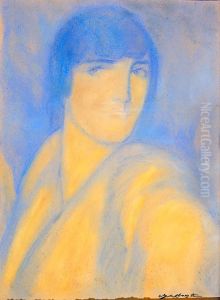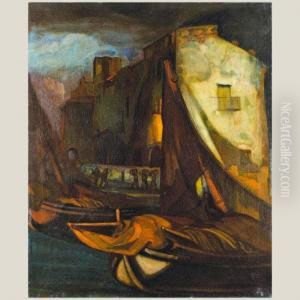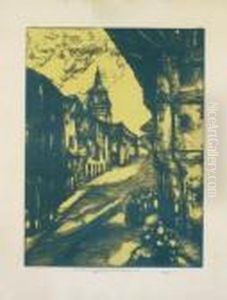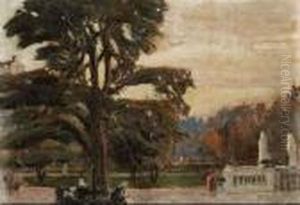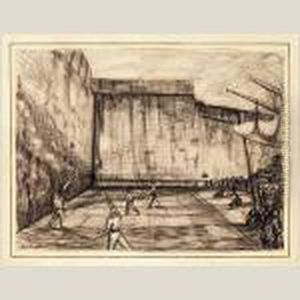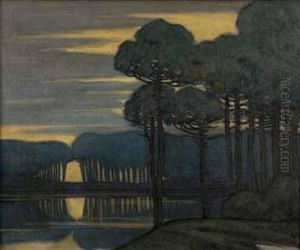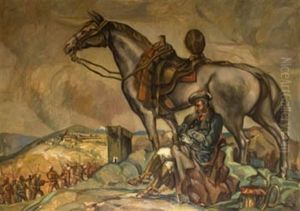Gustavo De Maeztu Paintings
Gustavo de Maeztu y Whitney was a Spanish painter whose work is characterized by a unique blend of symbolism, futurism, and cubism, with themes often revolving around Spanish culture, social issues, and the human figure. Born on August 1, 1887, in Vitoria, Spain, Maeztu was the son of a Cuban engineer and an English mother. His family moved to Bilbao when he was a child, which is where his interest in art began to flourish.
During his early career, Gustavo de Maeztu lived in Paris, which was the epicenter of the avant-garde movement. There, he was influenced by the innovative artistic currents of the time and began to develop his own style. He became friends with fellow Spaniards Pablo Picasso and Juan Gris, as well as other prominent artists of the era.
Upon the outbreak of World War I, Maeztu moved to England, where he continued to work and also engaged in journalism, writing for various publications. His articles often explored the nature of Spanish identity and culture, a reflection of his deep connection to his homeland.
Maeztu returned to Spain in 1919 and became an active part of the Spanish artistic scene, contributing to the development of modern art in the country. His work from this period is notable for its vibrant color palette and the incorporation of Spanish cultural elements, such as the use of traditional costumes and the portrayal of regional dances.
Tragically, Maeztu's life and career were cut short by the turmoil of the Spanish Civil War. He was executed by Republican forces on October 29, 1947, in Estella, Navarre, leaving behind a legacy of works that continue to be celebrated for their innovative approach to form and content, as well as their evocative representation of Spanish themes.










